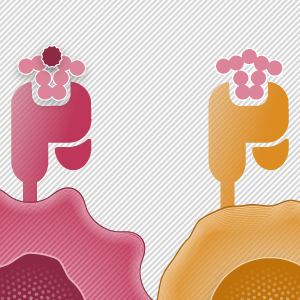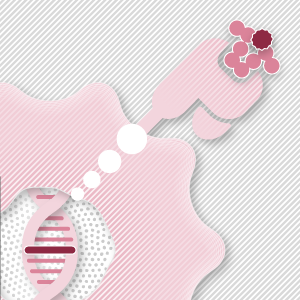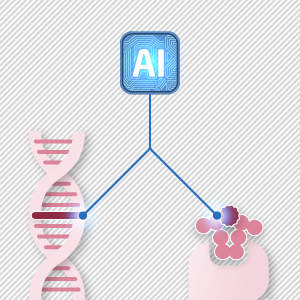Breadcrumb navigation
Neoantigens
Background
Cancer immunotherapy works by stimulating the body’s own immune response to eradicate cancer cells. Over the past few decades, immunotherapy has shown incredible efficacy in the treatment of cancers. In particular, the success of immune checkpoint inhibitors targeting CTLA-4 and PD-1/PDL1 paved the way for tumor immunotherapy. More recently, a new approach of cancer immunotherapy has emerged utilizing so called ‘neoantigens’. As cancer cells accumulate genomic mutations, some proteins may be expressed in a mutated form specifically in cancer cells. And, because they are unknown to the immune system before the onset of cancer, those antigens are not subject to self-tolerance and can be subject to a strong immune response and thus have become attractive targets. Vaccines containing neoantigens to trigger an immune response are now being used in clinical trials in various solid tumors.

What are Neoantigens?
Neoantigens are antigens generated by cancer cells because of genomic alterations among other mechanisms. Many neoantigens result from the onset of missense mutations in cancer cell DNA. Neoantigens can also be derived from proteins or peptides produced by dysfunctional RNA splicing or disordered post-translational protein modification in malignancies.
Compared with other types of tumor antigens, such as cancer-testis antigens (CTAs) and Tumor Associated Antigens (TAAs), neoantigens offer a distinct advantage because they appear to be tumor-specific and absent in normal tissues, thus being ideal targets for personalized treatment of tumors.

Challenges of Immunotherapy Targeting Neoantigens
Many currently available methods for neoantigen prediction are solely relying on binding affinity to the MHC of putative peptides. However, binding affinity is only one of the features required for a peptide to be immunogenic. Hence, prediction of immunogenicity using current algorithms remains challenging despite improved accuracy of binding prediction. To overcome this challenge and enrich for neoantigens with the greatest likelihood of immunogenicity, we developed an analytic method to parse neoantigen quality through rational biological criteria beyond binding affinity.

 Neoantigen: A New Breakthrough in Tumor Immunotherapy - PMC (nih.gov)
Neoantigen: A New Breakthrough in Tumor Immunotherapy - PMC (nih.gov)